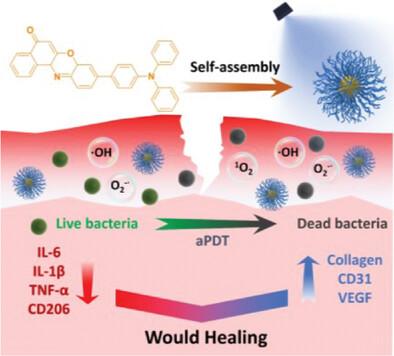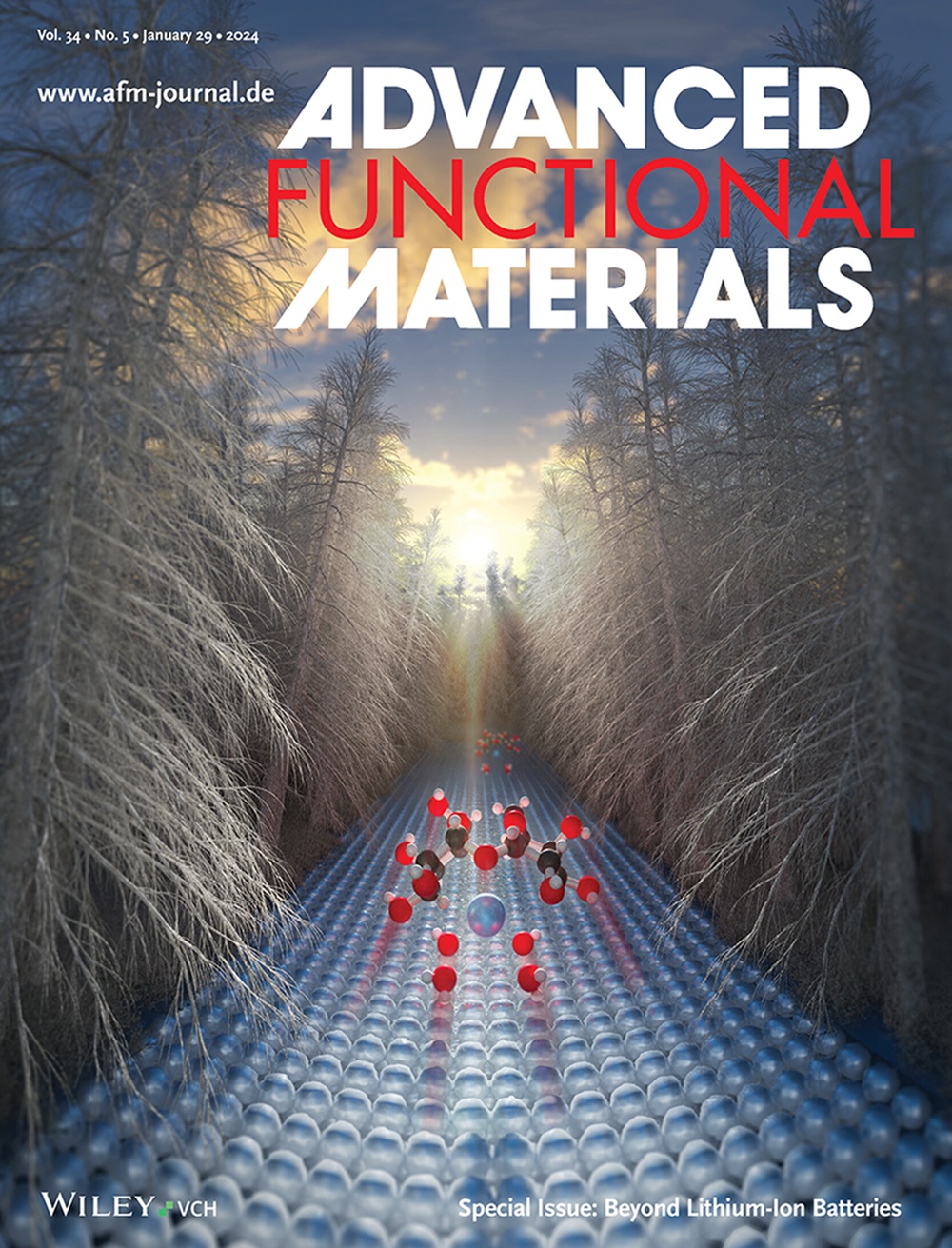Triphenylamine-Substituted Nile Red Derivatives with Efficient Reactive Oxygen Species Generation for Robust and Broad-Spectrum Antimicrobial Photodynamic Therapy and Abscess Wound Healing
IF 18.5
1区 材料科学
Q1 CHEMISTRY, MULTIDISCIPLINARY
引用次数: 0
Abstract
Infections caused by drug-resistant bacteria represent a major contributor to high mortality rates, underscoring the urgent need for effective non-antibiotic drugs and alternative therapies. Antimicrobial photodynamic therapy (aPDT) emerges as an innovative treatment due to its minimal drug resistance. Herein, a series of Nile Red derivatives is synthesized by a donor engineering strategy. Notably, NTPA featuring triphenylamine (TPA) as the electron-donating group, exhibited the highest production of reactive oxygen species (ROS). The enhanced electron donating-accepting (D-A) property effectively reduced the energy gap between S1 and T1 (ΔES-T), facilitating intersystem crossing (ISC) with a larger spin-orbit coupling (SOC) constant. Furthermore, the twisted conformation profoundly suppressed the quenching of ROS. As expected, an over 470-fold increase in ROS production is observed, predominantly comprising type-I ROS. NTPA nanoparticles (NPs) exhibited exceptional in vitro killing ability against various drug-resistant bacteria, with inhibition efficiency even reaching 99.9%. In the methicillin-resistant staphylococcus aureus (MRSA)-induced abscess model, NTPA NPs facilitated complete wound healing within just 8 days following a single administration and irradiation, highlighting their exceptional bactericidal and wound-healing promotion capabilities. Overall, this work inspired the construction of efficient Nile Red-based type-I photosensitizers (PSs) and the development of a new broad-spectrum aPDT method for drug-resistant bacteria treatment.

求助全文
约1分钟内获得全文
求助全文
来源期刊

Advanced Functional Materials
工程技术-材料科学:综合
CiteScore
29.50
自引率
4.20%
发文量
2086
审稿时长
2.1 months
期刊介绍:
Firmly established as a top-tier materials science journal, Advanced Functional Materials reports breakthrough research in all aspects of materials science, including nanotechnology, chemistry, physics, and biology every week.
Advanced Functional Materials is known for its rapid and fair peer review, quality content, and high impact, making it the first choice of the international materials science community.
 求助内容:
求助内容: 应助结果提醒方式:
应助结果提醒方式:


